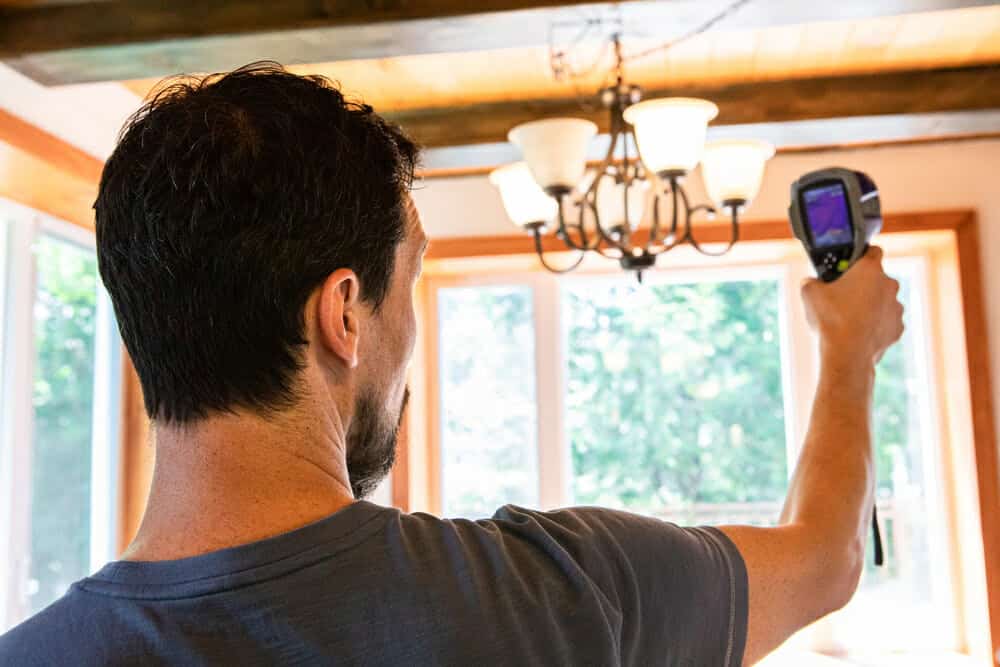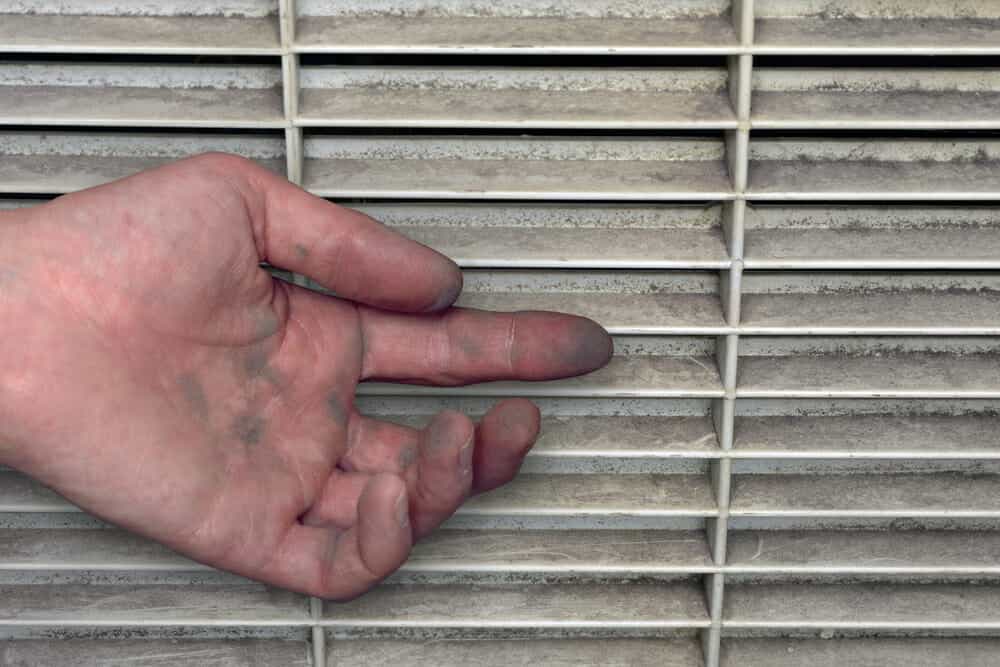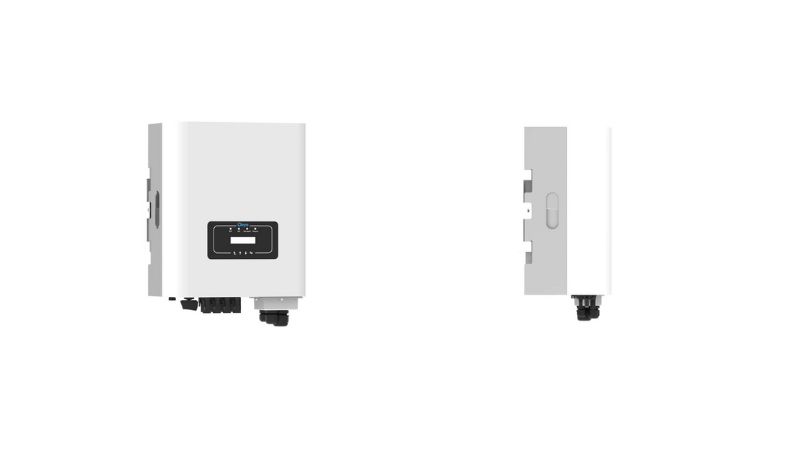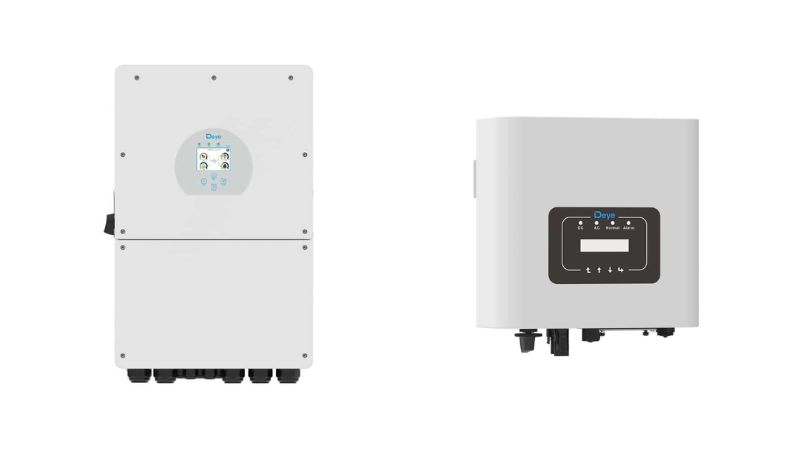Did you know that air pollution is responsible for about seven million deaths every year worldwide?
Even though many people think that we are only exposed to air pollution when we are out in the street, the reality is that you could be exposed to higher levels of pollution inside your home than outside.
Poor indoor air quality (IAQ) is associated with many health problems, ranging from irritation of the eyes, nose, and throat to respiratory diseases, heart disease, and cancer. Many air pollutants responsible for poor IAQ can be linked to increased moisture levels in the air and high temperature.
In this article, we focus on everything you need to know about indoor air quality. We define IAQ, present the primary causes of indoor air problems, suggest ways of determining whether you have an IAQ problem in your home, and provide advice on ways of improving the air quality inside a building, among other things.
Some Quick Statistics
To get an idea of the challenges related to IAQ, let’s start by looking at some quick statistics from the World Health Organization (WHO) and Our World in Data.
- An estimated 6 billionpeople across the world still rely on pollution-causing open fires or stoves fueled by coal, biomass, or kerosene.
- Around 4 millionpeople die prematurely from illnesses that can be linked to household air pollution caused directly or indirectly by inefficient cooking practices that include the use of polluting stoves together with solid fuels and kerosene.
- Almost 50%of pneumonia deaths among children below five years of age can be attributed to particulate matter (soot) inhaled from indoor pollution.
- Death rates from air pollution are 1,000-foldgreater in low-income countries when compared to high-income countries.
- Around 40%of the world does not have access to clean fuels for cooking.
What Is Indoor Air Quality?

The United States Environmental Protection Agency (EPA) defines indoor air quality as “the air quality within and around buildings and structures, especially as it relates to the health and comfort of building occupants.”
Based on the EPA definition above, we could say a building with good IAQ contains air with the least possible amount of pollutants, has the right moisture and temperature, and those inside the building are comfortable.
On the other hand, a building or structure with poor IAQ has high levels of indoor air pollution. The Organization for Economic Co-operation and Development (OECD) defines indoor air pollution as “chemical, biological and physical contamination of indoor air.”
Humidity and temperature are two of the leading factors determining air quality inside a building or structure. The right temperature and humidity ensure that a space remains dry and cool, discouraging the multiplication of contaminates.
EPA.gov recommends that “To protect health, comfort, the … building, and its contents, it is important that indoor relative humidity be maintained below 60%, ideally between 30% and 50%.” This reduces the potential for conditions that encourage microbial proliferation.
The American Society of Heating, Refrigerating and Air-Conditioning Engineers (ASHRAE) Standard 55-2017 recommends that “for thermal comfort purposes, temperature could range from between approximately 67°F and 82 °F [20°C and 28°C].”
ASHRAE adds that “A more specific range can be determined from the standard but depends on relative humidity, season, clothing worn, activity levels, and other factors.”
Why Worry About IAQ
Most of us spend about 90 percent of our time indoors. Suppose you thought that you were safer indoors than when being outside. In that case, you might need to think again because the concentration of some pollutants is between two and five times higher indoors than it is outdoors.
We need to be concerned about IAQ not just because it determines how comfortable we are but because it affects our health. This is a view supported by the US Department of Labor which reports that poor IAQ is linked to symptoms such as headaches, fatigue, challenges with concentration, and eye, nose, and throat irritation.
The British Lung Foundation suggests that everyone can be affected by indoor air pollutants. However, the organization emphasizes that children are especially vulnerable because their lungs are still developing and have smaller airways that can inflame and narrow easily.
Primary Causes of Indoor Air Problems

Poor IAQ is caused mainly by the release of particulates or gasses into the air. EPA.gov lists some of the primary sources of indoor air pollution:
- Appliances that burn fuel
- Tobacco products
- Building materials and furnishings, including asbestos, carpet, flooring, and furniture
- Products used in household cleaning, maintenance, hobbies, and personal care
- Central heating and cooling systems and humidification devices
- Excessive moisture
- Some indoor plants
- Outdoor sources that enter the building like radon, pesticides, and other pollutants
EPA.gov provides more details about cases of indoor air problems.
Identifying Problems in Indoor Air Quality
Even though there are sophisticated methods like sensors that can help identify IAQ problems, several everyday signs can alert you of indoor air hazards.
The University of Rochester Medical Center lists some of these signs:
- Abnormal and noticeable odors
- Stuffy and stale air
- Evident lack of air movement
- Dirty or broken central heating or air-conditioning
- Damaged chimneys or flue pipes
- Excessive humidity
- Molds and mildew
- Allergic reactions that diminish when people leave a particular place
Effects of IAQ on Health

It has been well established that IAQ impacts the health of individuals occupying a given space. For instance, the WHO lists several health conditions linked to poor IAQ, including pneumonia, chronic obstructive ischemic heart disease, pulmonary disease, stroke, and lung cancer.
EPA.gov separates the health effects of indoor air pollution into two broad categories: immediate effects and long-term effects.
Immediate Effects
With regards to immediate impact, EPA.gov notes that some health effects become apparent after a single exposure. These immediate effects include fatigue, headaches, dizziness, and irritation to the nose, eyes, or throat. These can easily be treated.
EPA.gov says that “The likelihood of immediate reactions to indoor air pollutants depends on several factors including age and pre-existing medical conditions.” The same organization adds that “In some cases, whether a person reacts to a pollutant depends on individual sensitivity, which varies tremendously from person to person.”
Long-Term Effects
Some of the poor IAQ effects will only show up after an extended period of exposure. EPA.gov reports that these effects, including heart disease, cancer, and respiratory diseases, can be severely incapacitating and fatal.
Because long-term effects are not immediately apparent, you need to improve the indoor air quality in your home or building, even when symptoms are not obvious.
Testing IAQ
How do I determine the condition of indoor air quality in my home? This is a vital question to ask now that you know how it affects comfort and health.
Over the years, technology has progressively created accurate sensors for measuring the levels of pollutants in a specific structure or building.
The European Commission identifies various categories of sensors currently in the market:
Electrochemical sensors: Detect chemical reactions in the air, providing information on which gases are circulating indoors.
Photo ionizing detector: Ionizes volatile organic compounds, measures the resulting electrical current and detects which gases are present in the air.
Optical particle counters: Measure the light spread by particles to detect particulate pollution.
Optical sensors: Measure the absorption of infrared light to sense the presence of gases like carbon dioxide and carbon monoxide.
The European Commission adds that “The signals from sensors not only depend on the air pollutant of interest, but also on a combination of several effects, such as other interfering compounds, temperature, humidity, pressure and signal drift.”
Effects of Climate Change on IAQ
The adverse effects of climate change are well documented, but how do they affect IAQ? According to CDC.gov, “Higher temperatures [caused by global warming] lead to an increase in allergens and harmful air pollutants.”
Climate change also leads to an increase in the ozone, one of the harmful air pollutants. Even though these pollutants may start outside, they quickly make their way indoors through various openings.
Effective Ways to Improve Indoor Air Quality
With the technological advances and a rising number of all sorts of devices in the past few decades, a decrease in indoor air quality is inevitable. However, the good news is that there are simple ways to ensure that the levels of pollutants in buildings and other indoor structures are reduced to the minimum.
Here are some measures you can take:
- Identify the signs of poor IAQ.
- Keep humidity levels within the recommended range using a home dehumidifier.
- Control the temperature within the recommended range and ensure adequate ventilation, even in cold months.
- Measure the levels of pollution caused by outdoor sources such as radonin your home.
- Identify the source of the pollution and control it.
- Use an air cleaner.
- Keep your home clean to cut down on the dust and dirt that could provide food and shelter for air pollutants.
- Properly install your gas stove with a fan or hood that leads outside.
- Do not smoke inside the house or quit smoking altogether.
The tips above are only a few you can embrace to ensure the best IAQ possible. It’s always vital to be diligent in maintaining good practices and systems like your vents and air conditioning, ensuring that they are well serviced, and the filters are changed based on manufacturer recommendations.





